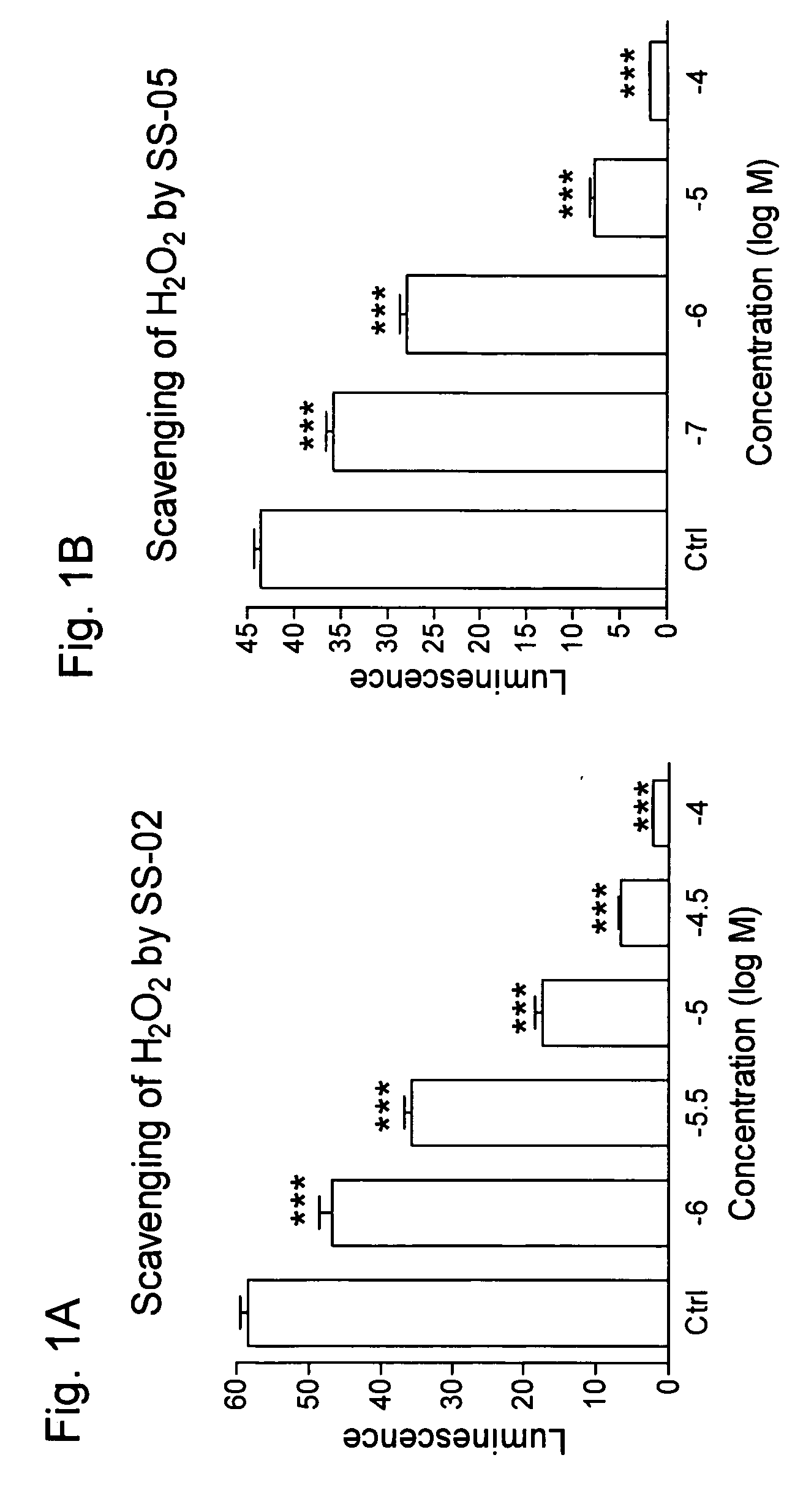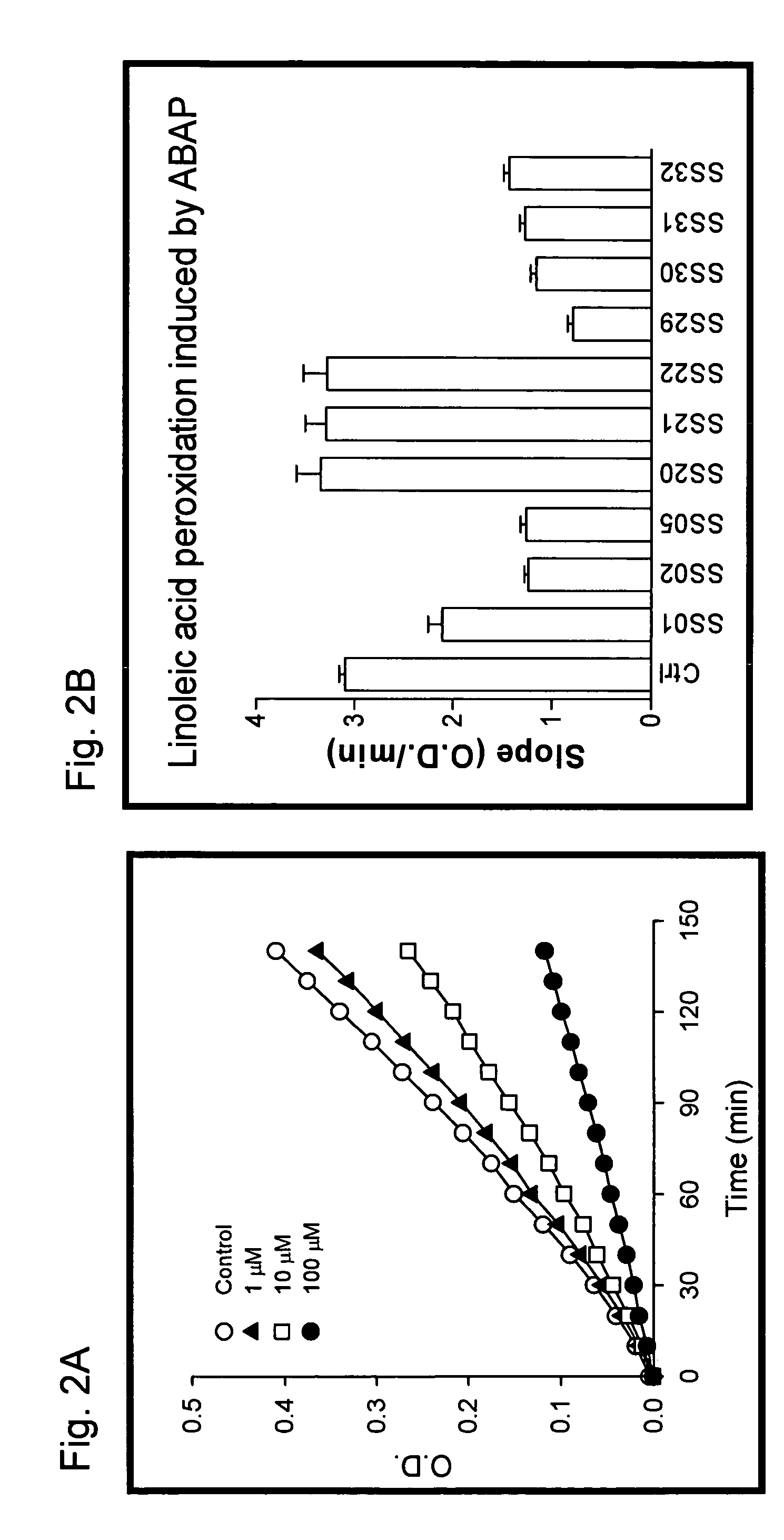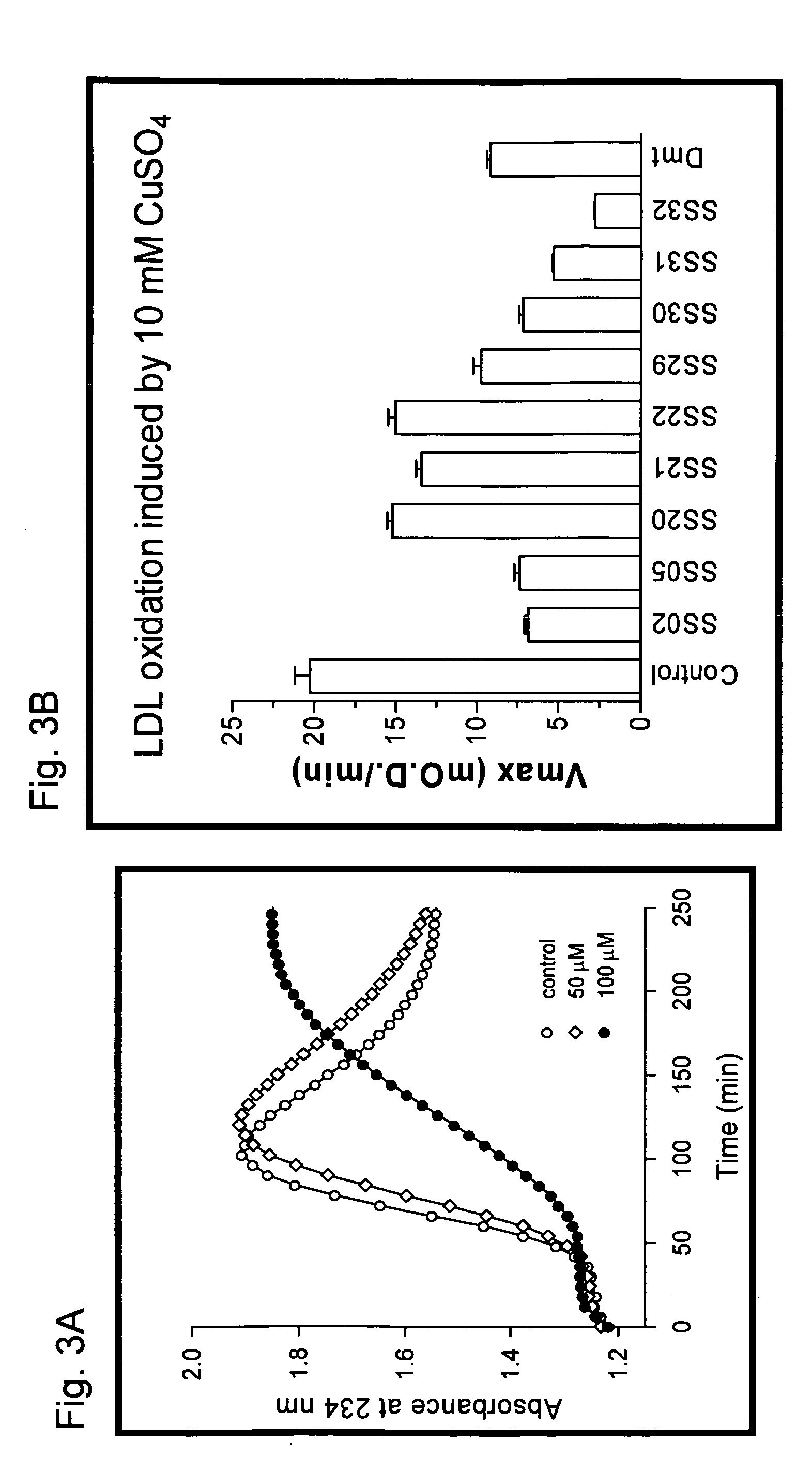Methods for reducing oxidative damage
a technology of oxidative damage and methods, applied in the field of methods for reducing oxidative damage, can solve the problems of affecting the development of specific mitochondrial therapies, affecting the oxidative stress of mitochondria, so as to reduce oxidative damage, reduce oxidative damage, and reduce oxidative damag
- Summary
- Abstract
- Description
- Claims
- Application Information
AI Technical Summary
Benefits of technology
Problems solved by technology
Method used
Image
Examples
example 1
[Dmt1]DALDA Penetrates Cell Membrane
[0136] The cellular uptake of [3H][Dmt1]DALDA was studied using a human intestinal epithelial cell line (Caco-2), and confirmed with SH-SY5Y (human neuroblastoma cell), HEK293 (human embryonic kidney cell) and CRFK cells (kidney epithelial cell). Monolayers of cells were grown on 12-well plates (5×105 cells / well) coated with collagen for 3 days. On day 4, cells were washed twice with pre-warmed HBSS, and then incubated with 0.2 ml of HBSS containing either 250 nM [3H][Dmt1]DALDA at 37° C. or 4° C. for various times up to 1 h.
[0137] [3H][Dmt1]DALDA was observed in cell lysate as early as 5 min, and steady state levels were achieved by 30 min. The total amount of [3H][Dmt1]DALDA recovered in the cell lysate after 1 h incubation represented about 1% of the total drug. The uptake of [3H][Dmt1]DALDA was slower at 4° C. compared to 37° C., but reached 76.5% by 45 min and 86.3% by 1 h. The internalization of [3H][Dmt1]DALDA was not limited to Caco-2 ce...
example 2
Targeting of [Dmt1]DALDA to Mitochondria
[0141] To examine the subcellular distribution of [Dmt1]DALDA, the fluorescent analog, [Dmt1,AtnDap4]DALDA (Dmt-D-Arg-Phe-atnDap-NH2; where atn=β-anthraniloyl-1-α,β-diamino-propionic acid), was prepared. The analog contained β-anthraniloyl-1-α,β-diaminopropionic acid in place of the lysine reside at position 4. The cells were grown as described in Example 1 and were plated on (35 mm) glass bottom dishes (MatTek Corp., Ashland, Mass.) for 2 days. The medium was then removed and cells were incubated with 1 ml of HBSS containing 0.1 μM of [Dmt1,AtnDap4]DALDA at 37° C. for 15 min to 1 h.
[0142] Cells were also incubated with tetramethylrhodamine methyl ester (TMRM, 25 nM), a dye for staining mitochondria, for 15 min at 37° C. Cells were then washed three times with ice-cold HBSS and covered with 200 μl of PBS, and microscopy was performed within 10 min at room temperature using a Nikon confocal laser scanning microscope with a C-Apochromat 63× / 1....
example 3
Scavenging of Hydrogen Peroxide by SS-02 and SS-05 (FIG. 1)
[0145] Effect of SS-02 and SS-05 (Dmt-D-Arg-Phe Orn-NH2) on H2O2 as measured by luminol-induced chemiluminescence. 25 μM luminol and 0.7 IU horseradish peroxidase were added to the solution of H2O2 (4.4 nmol) and peptide, and chemilumunescence was monitored with a Chronolog Model 560 aggregometer (Havertown, Pa.) for 20 min at 37° C.
[0146] Results show that SS-02 and SS-05 dose-dependently inhibited the luminol response suggesting that these peptides can scavenge H2O2.
PUM
| Property | Measurement | Unit |
|---|---|---|
| water soluble | aaaaa | aaaaa |
| endogenous antioxidant defense | aaaaa | aaaaa |
| oxidative stress | aaaaa | aaaaa |
Abstract
Description
Claims
Application Information
 Login to View More
Login to View More - R&D
- Intellectual Property
- Life Sciences
- Materials
- Tech Scout
- Unparalleled Data Quality
- Higher Quality Content
- 60% Fewer Hallucinations
Browse by: Latest US Patents, China's latest patents, Technical Efficacy Thesaurus, Application Domain, Technology Topic, Popular Technical Reports.
© 2025 PatSnap. All rights reserved.Legal|Privacy policy|Modern Slavery Act Transparency Statement|Sitemap|About US| Contact US: help@patsnap.com



